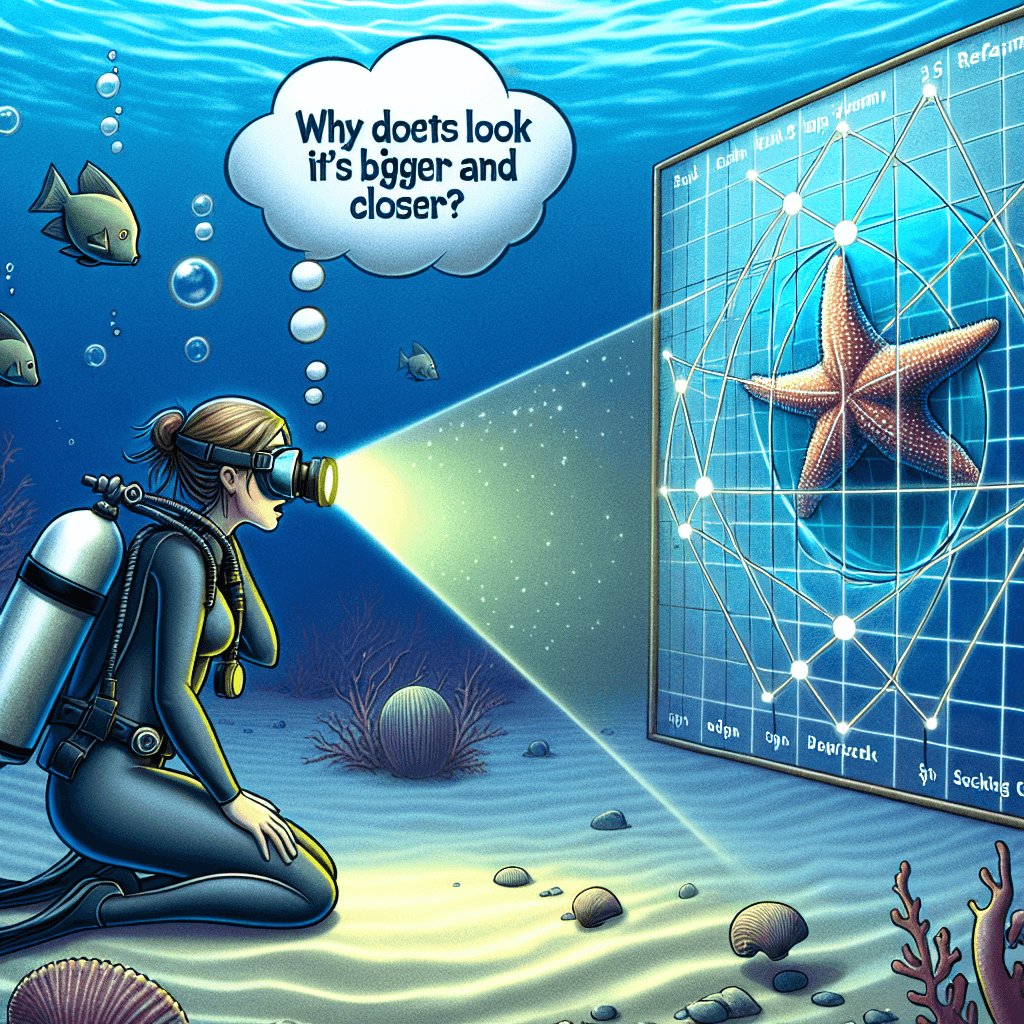Why do things underwater look bigger and closer than they really are
It’s not your eyes playing tricks on you—it's a fascinating law of physics that turns the entire underwater world into a giant magnifying glass.


Too Long; Didn't Read
TLDR: Light bends, or refracts, as it passes from the water into the air space in your mask. Your brain doesn't account for this bend and interprets the object as being about 25% closer and therefore larger than it actually is.
The Underwater Magnifying Glass: Why Do Things Underwater Look Bigger and Closer Than They Really Are?
Have you ever been snorkeling and reached out to touch a vibrant fish, only to have your hand close on empty water? Or perhaps you've stood at the edge of a clear pool and thought the bottom looked surprisingly shallow. This isn't just a trick of your imagination; it's a fascinating optical illusion rooted in fundamental physics. The underwater world operates under different visual rules, making objects appear distorted in a very specific way. This post will dive into the science that explains why everything underwater appears about 33% larger and 25% closer than it truly is.
The Science Behind the Illusion: It's All About Refraction
The master illusionist responsible for this underwater magic is a phenomenon called refraction. In simple terms, refraction is the bending of light as it passes from one medium to another, like from water to air.
Light travels at different speeds through different materials. It zips through the near-vacuum of space at its maximum speed, but it slows down when it travels through denser substances like air, glass, or water. When light rays hit a new medium at an angle, this change in speed causes them to bend or change direction.
You’ve seen this effect many times, perhaps without realizing it. The classic example is a straw in a glass of water. The straw appears bent or broken at the water's surface. The light reflecting off the submerged part of the straw travels from water into air before reaching your eyes, and it bends in the process. Your brain, which assumes light always travels in a straight line, is fooled into seeing the straw in a place where it isn't.
Why Bigger? The Magnification Effect
This same principle of refraction explains why objects look larger underwater. When you look at an object underwater while wearing a diving mask or goggles, you are creating a crucial sequence of mediums for light to travel through:
- Light reflects off the object (e.g., a coral reef).
- It travels through the water.
- It passes through the flat glass of your mask.
- It travels through the pocket of air inside your mask.
- Finally, it enters your eye.
The most significant bending occurs at the boundary between the water and the air inside your mask. As the light rays exit the denser water and enter the less-dense air, they bend away from their original path. Your brain, however, doesn't account for this bend. It traces the light rays back in a straight line to form an image. This "virtual image" that your brain constructs is magnified, making the object appear about a third larger than its actual size. Your dive mask essentially acts like a giant, flat magnifying lens.
Why Closer? The Illusion of Apparent Depth
The "closer" effect is simply the other side of the same refractive coin. Because your brain perceives the object as larger, it also places it closer to you. This is known as apparent depth.
Think back to the swimming pool example. The light reflecting from the bottom of the pool bends as it leaves the water's surface. Your brain interprets these bent rays as having come from a shallower point. The same thing happens with individual objects. The virtual image created by your brain is not only larger but is also located at a shallower depth than the real object. This is why you might misjudge the distance when reaching for that shell on the seafloor—your brain is telling you it’s 25% closer than it is in reality.
Conclusion
So, the next time you dip your head beneath the waves, you’ll know that the enlarged, seemingly within-reach world you see is a beautiful illusion created by physics. It’s not magic, but the science of refraction—the bending of light as it passes from water to the air in your mask. This process tricks your brain into creating a virtual image that is both bigger and closer than the real thing. Understanding this phenomenon not only solves a common puzzle for swimmers and divers but also deepens our appreciation for the complex interplay between light, water, and our own perception.
More Articles

Why do spaghetti stains cling to plastic tubs but not glass bowls?
Discover why tomato sauce permanently dyes your plastic containers but wipes clean from glass—it's not your scrubbing power, but a simple case of molecular attraction.

Why was a brilliant philosopher's name twisted into the modern word for a fool?
He was a celebrated intellectual giant, yet a centuries-long smear campaign by his academic rivals twisted his very name into a common insult for a fool.

Why were those wacky, waving inflatable tube men originally created?
Before they became the kings of car dealership kitsch, these flailing figures were created as a stunning art installation for the 1996 Olympic Games.